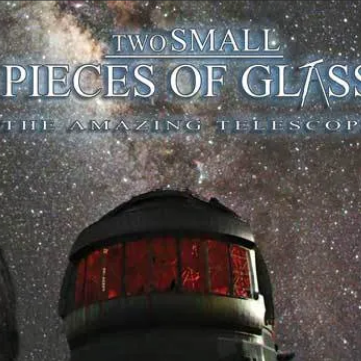
Clemson University Department of Physics and Astronomy // Courtesy
Clemson's public planetarium show incorporates the "Two Small Pieces of Glass" film to expand on the background of telescope technology.
This fall semester, the Clemson University Planetarium is hosting public events, bringing the community together to enjoy the wonders of astronomy as a part of the physics and astronomy department’s outreach efforts.
To begin the show, participants relaxingly lean back, waiting for the falsified sky to appear above and enjoy an astronomical introduction to the show.
On Sept. 24, a Clemson University graduate student introduced the layout of the celestials by projecting an outlook of the nighttime sky onto the curved dome ceiling.
The student explained that different stars and planets appear at different times in the evening, depending on the time of year. Currently, Saturn is up during the evening, while the moon is not.
The speaker transitioned into a review of the constellations paired with their astrological implications. The audience gasped at the ever-changing constellations as the speaker further described these clusters of stars as useful for navigation prior to modern technology.
Many of the constellations also incorporated mythological backgrounds, often representing stories about fallen heroes, animal spirits and other myths. One notable constellation included the Big Dipper, which is known to lie within the greater constellation that is Ursa Major, or the Great Bear.
The audience also learned that before updated tracking innovations, people would use the constellations to figure out where planets were at certain times of year, though it proved to be difficult at times. Ancient astronomers divided the sky into regions based on the constellations to track where spatial objects were orbiting, such as the planet Saturn.
The images upon the planetarium’s dome gradually shifted into a movie titled “Two Small Pieces of Glass,” in which two young students learn from an astronomer in possession of different types of telescopes.
The film hooked the audience’s attention with a telescope peering out into a lake saturated with the pinks and oranges of a sunset, surrounded by calming bird chirps. The contrast of the metallic telescope against the intimate backdrop of nature was captivating.
The two students in the film attend a stargazing event where they encounter the astronomer with her advanced telescope. The woman enhances the children’s knowledge of the origin of two-piece glass telescopes by detailing Galileo’s amplifications to a child’s spyglass.
The astronomer teaches the children about various milestones in telescope development, ending with the launch of the NASA/ESA Hubble Space Telescope and what this holds for the future of astronomy.
The informative planetarium session then came to an end, but not without leaving the audience in wonder from the shining images depicted on the sphere-shaped screen.
The University will host several more public planetarium shows in Kinard Laboratory’s room 112 throughout the semester. The next showing, labeled “From Earth to the Universe,” will take place on Oct. 8.